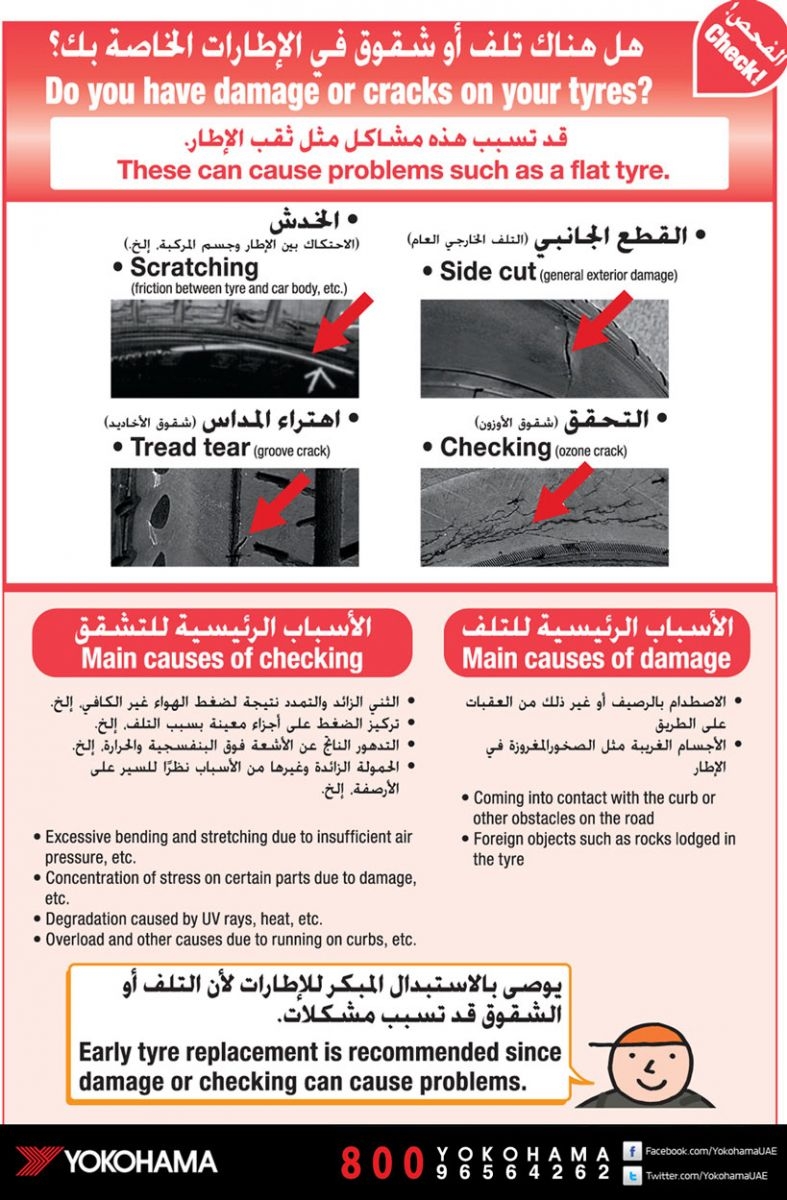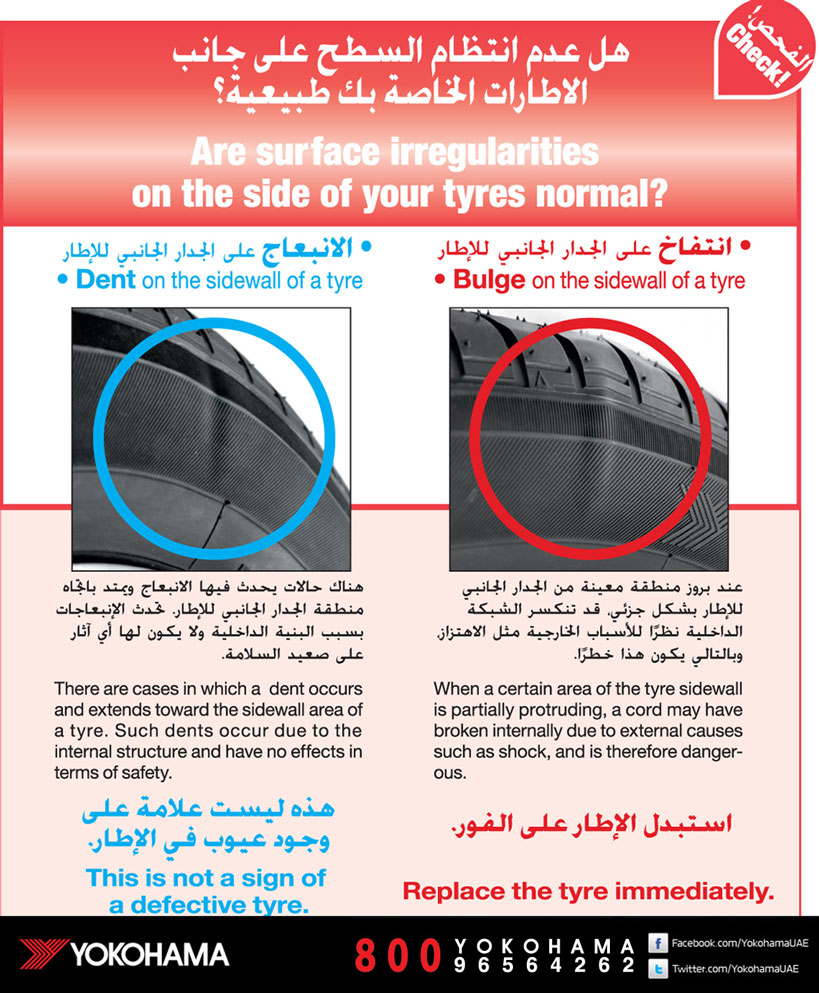



To maximize the life of your tires, improve your driving performance, increase your fuel economy, and overall safety on the road.. please follow these tips:
1. Ensure Tires are Properly Inflated
Each vehicle is designed differently, for different needs, so are your tires. Every tire designed has an ideal pressure rating which optimizes for the best performance. Deviating from this could occur in decreased fuel economy, tread life, and performance – But most of all, it is unsafe and is a leading cause of tire failure.
Finding your tire’s best pressure setting, check the inside of your driver’s side door for the recommended PSI and reference your tire for the “Max PSI” to ensure that this is not exceeded. If you have a tire pressure gauge-great, if not, many service shops and gas stations will have them at their air stations. When filling your tires with air, frequently measure the PSI to ensure you within the recommended amount.
Repeat this for all 4 tires until all are at the same amount. Doing this at least once a month is recommended as typically tires naturally lose about 2 PSI per month.
2. Rotate Your Tires Regularly
Rotating your tires regularly will help you maximize your tire tread life, but it is important to note what type of vehicle you own and the type of tires you purchased.
If you own a front wheel or rear wheel drive vehicle where most of the braking, steering, and driving force happens, your tires will wear faster in those areas.
A “cross-rotation pattern”—that is, moving the left-front tire to the right-rear axle, the right-front tire to the left-rear axle, etc.—can best balance tread wear and maximize tire life. That sequence can be performed on any vehicle equipped with four non-unidirectional tires. Designated by an arrow on the sidewall, unidirectional tires must be rotated only front to rear and rear to front, on the same side of the vehicle, so their direction of revolution does not change.
All-wheel-drive and four-wheel-drive vehicles are best suited to a lateral rotation—left to right and right to left—at the same end of the vehicle.
It is recommended that you rotate your tires once every 10,000 KMS or 6 months.
3. Follow The Seasons
Every country / city is unique and so is its’ weather. Using a tire that is not designed for a specific season, such as Winter tires designed for ice/snow/slush being used during a dry summer season or vise-versa will inevitably wear your tires faster than expected. Each tire is built with specific compounds and structure which range in tire wear ratings.
Rule of thumb: If the season you are in does not match what your tire was designed for, it’s advised to switch to a set that is.
4. Inspect Your tires
A visual inspection of your tires will be the first tell-tale sign if your tires are in good condition or needs replacing. This should be done at least once a month or before you take any sort of long trip.
Things to look for:
• Cracks or bulges anywhere on the tire, but pay close attention to the sidewalls
• Punctures or any foreign objects lodged into the tire – If not serious, this can be easily repaired.
• Uneven tread wear which may indicate improper inflation, steering issues, or you may need a wheel alignment
• Chunking of tread may indicate the structural integrity might be compromised
5. Properly Balance Your Tires
Not properly balancing your tires can lead to uneven or premature tread wear as well as an uncomfortable drive. A tell-tale sign of this can be detected from a severe thumping typically at highway speeds, if this occurs, it’s recommended to take your vehicle to an experienced tire technician.
You should have your tires balanced every time you change your tires or have them remounted.
6. Keep it Aligned
Maintaining your vehicles’ steering and suspension settings can severely improve your ride comfort as well as play an important role in even tread wear. Not doing so, can lead to rapid tread wear of specific tires.. This can be easily detected if you feel your vehicle “pull” to a certain direction when driving on a straight flat road.
Alignments should take place any time a vehicle has been involved in a collision or you frequently driven through areas with rough roads or pot holes.
7. Don’t Overload Your Tires
Your tires are designed to take on a maximum curb weight and it is important to pay close attention to this. Failure to do this can lead to uneven tread wear as well asthe potential for sudden failure.
When inspecting your tires, look at the sidewall which will display the maximum curb weight the tire is designed for.
8. Don’t Mix & Match
As mentioned above, each tire is designed differently with different performance features and tread life. By not replacing all tires at the same time, this means your tread life will not be even, thus leading to rapid and uneven tread wear.
While it may be more ‘cost effective’ at the time to only replace 1 or 2 tires, you may be replacing those tires much sooner than expected.
9. Meet Your Needs
Before purchasing tires, it is important to assess your location and what you use your vehicle for.
For example, if you are an outdoors person and frequently going on trips with uneven pavement, it might be wise to purchase an off-road tire as any other tire may not be able to handle the impact.
10. Replace it When Needed
When inspecting your tire, it is important to pay close attention to your tire tread. It is best to use a tire tread depth gauge to measure the remaining tire tread, this is typically measured in 32nds of an inch as an industry standard. It is advised, once the tires have reached below 30-40% to bring your vehicle to your local tire expert to get their expert advice. You can also reference the tread wear indicators within the grooves of the tread, these are slightly raised bars which demonstrate the bare minimum allowable tread depth.
Replacing tires on time, will not only improve your daily drive in comfort, but most importantly, your safety.
